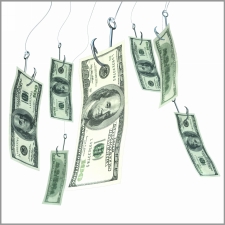Lifecycle Funds May Pose A Hidden Danger 
Wouldn’t it be nice to set your retirement plan on automatic pilot? Just adjust the timer button to the year you expect to retire — “2027 please” — and go about your business until that golden day arrives and the checks start pouring in.
That’s the promise of lifecycle funds, also called target date funds. And while these funds are probably beneficial to younger workers who don’t want to think too much about their investment portfolio, there are dangers lurking behind the promise of “no-effort” returns.
Lifecycle funds exploded in popularity over the last decade. According to recent figures investors may choose from among hundreds of funds, compared with only about two dozen in 2000. These funds promise to take care of bothersome details for you such as asset allocation, diversification, and rebalancing. They invest in a combination of mutual funds, stocks, and bonds, and the mix is automatically adjusted over the years to reflect how close the investor is to retiring. The funds start out with an aggressive asset mix and slowly become more conservative over time.
This one-size-fits-all philosophy is fine for a group of 30-something workers investing through their company 401(k) plan, but once you approach age 50 these funds likely will no longer be your best choice, especially if you have achieved a high net worth. That’s because one size does not fit all when it comes to gifting assets to children, funding a college education, buying insurance, setting up trusts, and planning your estate.
If your goals include a second home in Maui, a late-life doctorate degree, and continued part-time consulting work, a lifecycle fund is not going to take those factors into account. Such individual needs are best addressed with individual advice.
 Financial Planning Association offers some factors to consider:
Financial Planning Association offers some factors to consider:
- How much money will you need to retire? Sure, a lifecycle fund promises investment growth, but just how much growth do you need? What specific spending, income, or tax issues will affect your investment picture?
- How good is the lifecycle fund your employer offers? Just because your company is offering a target fund doesn’t mean it fits your needs.
- What happens if you change jobs? If you roll over these assets into another tax-advantaged retirement plan at another company, how will that match up to the strategy in the previous plan?
- How much are you paying in fees? If someone else is making the decisions, even if they are triggered automatically, how much are you paying for that service? Lifecycle funds are sometimes based on a fund-of-funds structure that layers a fee on top of the fees incurred by the individual funds.
- How are you using the fund? These funds are designed to provide all of the diversification an investor needs in one place. However, many investors are buying lifecycle funds while also placing assets into several other investment vehicles, resulting in overlapping investments.
You should consider a fund's investment objectives, risks, and charges and expenses carefully before you invest. The fund's prospectus contains this and other information about the fund, and should be read carefully before investing. A copy of the prospectus of the fund you are interested in can be obtained by contacting the fund company or our office.
© 2024 Advisor Products Inc. All Rights Reserved.
